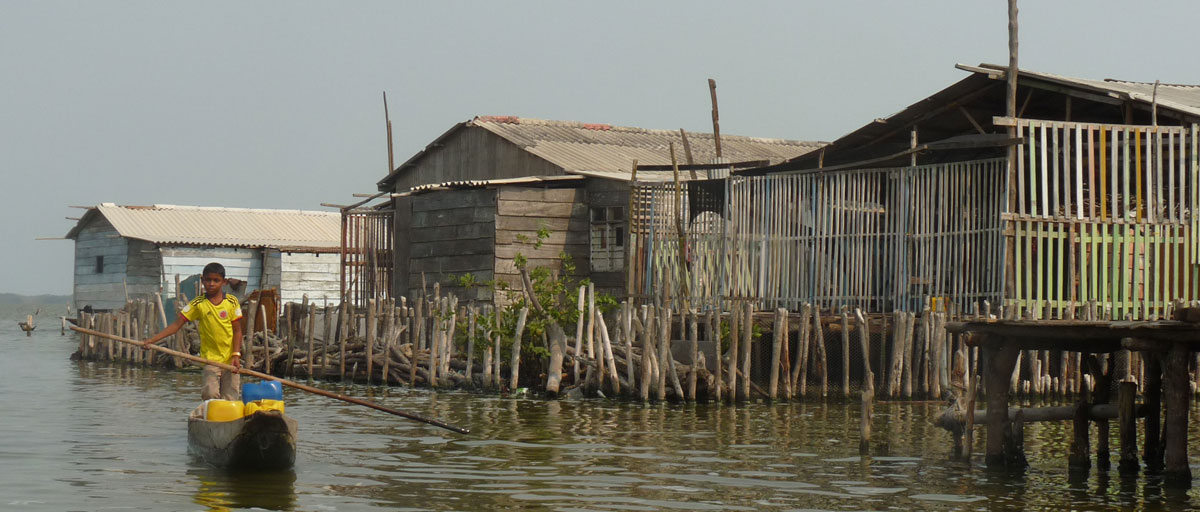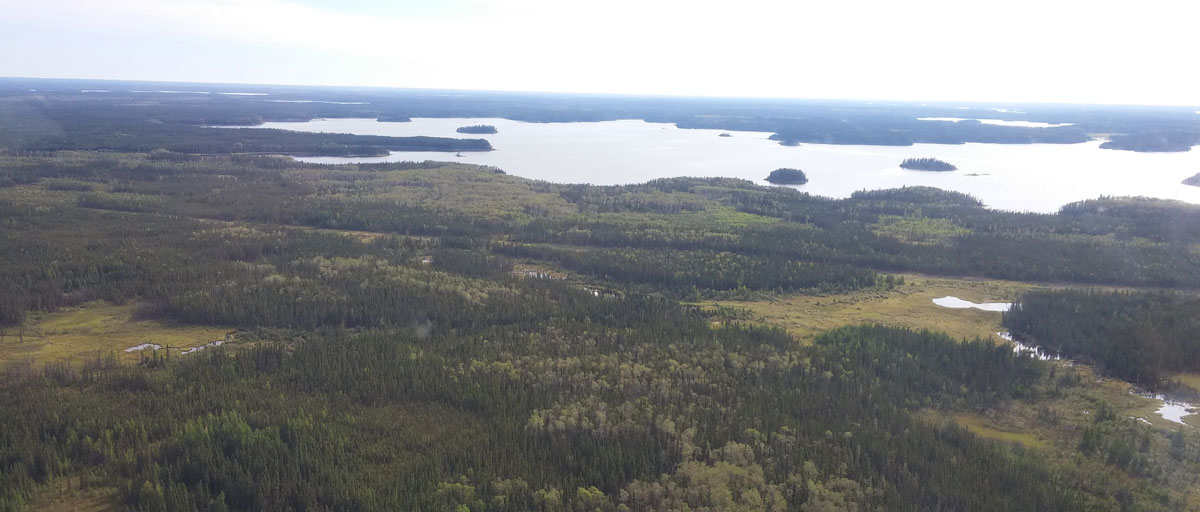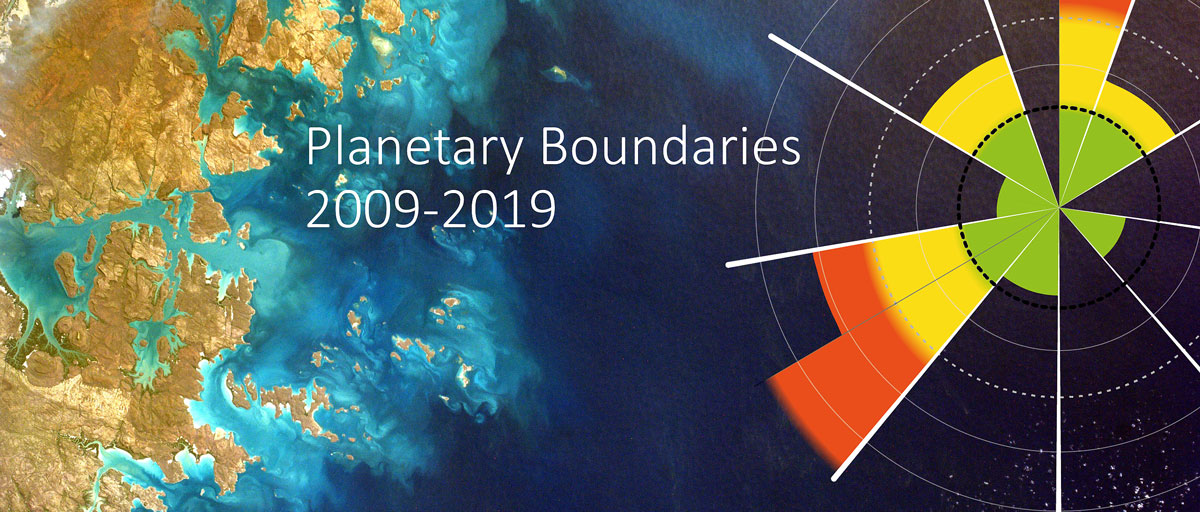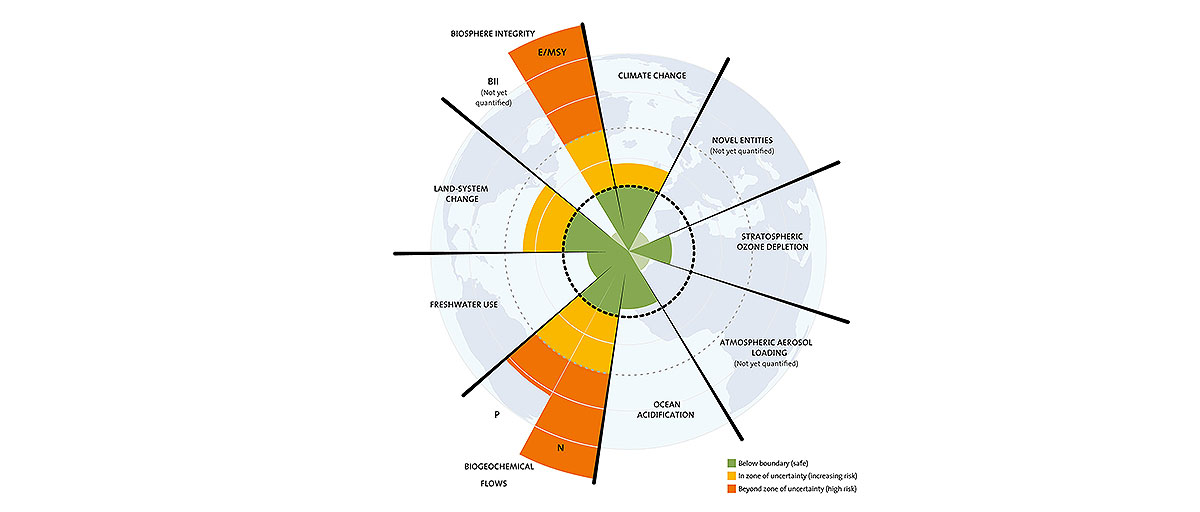Bildtext får vara max två rader text. Hela texten ska högerjusteras om den bara ska innehålla fotobyline! Photo: B. Christensen/Azote
PLANETARY BOUNDARIES
Colombian wetlands used as showcase for how to use the water planetary boundary
- Researchers find a point of harmony for translating the updated water planetary boundary for local applications
- The fair shares approaches are used for integrating the planetary boundary framework in catchment management, city planning, national governance, and corporate strategies
- The new study presents an approach to local use of the water planetary boundary that combines the advantages of the fair shares approach (Earth System relevance and global responsibility) with the local safe operating space approach (local relevance)
A new study harmonizes the water planetary boundary with local boundaries for the La Cienega wetlands in Colombia
A FAIR SHARES APPROACH: Define a safe operating space for humanity on Earth. That was the ambitious goal achieved by centre researchers in 2009, when they launched the planetary boundary framework.
Since then, the framework has been applied to management and governance in several countries and regions including China, Columbia, EU, Finland, Germany, Netherlands, South Africa, Sweden and Switzerland.
Now they are interpreting this framework at local levels.
Looking specifically at the planetary boundary for freshwater use - or the water planetary boundary, a recent update that captures also the Earth resilience function of water in soil, atmosphere, aquifers, and in frozen form - , researchers ask: is it a question of slicing up the pie into “fair shares”?
Or should we apply the framework in a bottom-up way, considering locally relevant variables to find a “local safe operating space”?
The conclusion, published in the journal Earth’s Future, is a flexible approach.
By integrating these top-down and bottom-up perspectives they find a point of harmony for translating the updated water planetary boundary for local applications.
Several centre researchers contribute to the study: Fernando Jaramillo, Lan Wang‐Erlandsson, Sarah E. Cornell, Miina Porkka, Tiina Häyhä, Anne‐Sophie Crépin, Ingo Fetzer and Line Gordon. Samuel C. Zipper from University of Kansas is lead author.
From wetlands to businesses
As the name implies, a fair shares approach requires ethical considerations. For instance, ice melt is strongly driven by anthropogenic climate change; however, the countries contributing most to climate change are not the same countries feeling the strongest impacts – so how can we divide up allocations of this frozen water?
Rather than trying to assess what is left to exploit, as might happen by comparing conditions to the global safe operating space under the fair shares approach, the focus should shift to actions needed to maintain and restore local environmental functioning.
Lan Wang-Erlandsson, co-author
The fair shares approach is known as ‘downscaling’ and local safe operating space approaches are termed ‘upscaling’. These approaches are used for integrating the planetary boundary framework in catchment management, city planning, national governance, and corporate strategies.
For example, companies such as L’Oréal, Houdini and Alpro are already trying to implement the planetary boundary framework at different scales.
A perverse incentive
In the context of La Cienaga wetland complex, looking at the local safe operating space depends on keeping water salinity within a narrow optimal range. At the global scale, sea level rise linked to ice-sheet melt and climate change increases ocean-wetland exchange.
This reveals a perverse incentive; allowing increases in sea levels would improve wetland biosphere integrity, since sea salinity is lower than the current hypersaline conditions causing mangrove mortality.
The new study presents an approach to local use of the water planetary boundary that combines the advantages of the fair shares approach (Earth System relevance and global responsibility) with the local safe operating space approach (local relevance).
Methodology
The study compares the value added by fair shares approach and the local safe operating space approach to typical water management approaches in different contexts. They identify strengths, weaknesses, and principles for effective implementation of each approach.
To take advantage of the strengths, they propose a methodology to harmonize them to develop a set of local boundaries which are consistent with both local and global water sustainability.
To get there, centre researchers asked these questions:
(i) How can global-scale values be meaningfully divided to watersheds, nations, and commercial entities?
(ii) How does the planetary boundary framework complement existing approaches?
(iii) What questions need to be answered for the framework to aid local water management?
Zipper, S.C., Jaramillo, F., Erlandsson, L-W., Cornell, S.E., Gleeson, T., Poorka. M. 2020. Integrating the water planetary boundary with water management from local to global scales. Earth's Future, DOI: 10.1029/2019EF001377
For questions about the study, please contact co-author Lan Wang Erlandsson:











